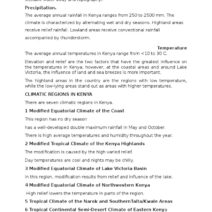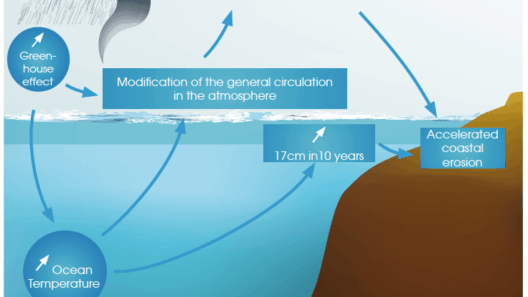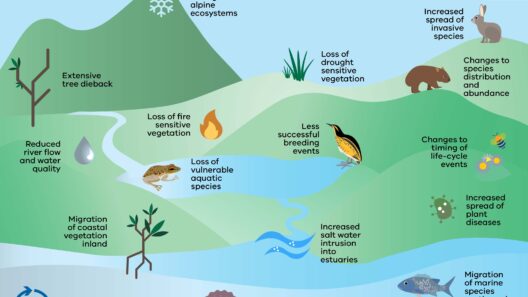Climate change is one of the most pressing challenges facing our planet. The impacts of rising temperatures, erratic weather patterns, and increased frequency of natural disasters affect not only our environment but also our economy and health. Addressing these issues requires a multifaceted approach that incorporates innovative solutions. Below are key strategies that individuals, businesses, and governments can employ to mitigate climate change effectively.
Understanding the enormity of climate change is necessary to grasp the range of solutions available. While options might seem overwhelming, there are several evidence-based strategies that can significantly reduce greenhouse gas emissions. Implementing these strategies not only cuts down on pollution but often boosts economic growth and improves public health.
One of the most impactful changes can be made through the transformation of our energy systems. Transitioning from fossil fuels to renewable energy sources, such as wind, solar, and hydroelectric power, is paramount. These energy sources are clean, sustainable, and represent the future of energy production. Investing in renewable energy infrastructure creates jobs and reduces dependency on foreign oil, bolstering national security. Furthermore, advancements in technologies like battery storage and smart grids enhance the reliability and efficiency of renewable energy systems, making them more accessible and affordable for consumers.
Another critical area is enhancing energy efficiency. Improving energy efficiency in homes and commercial buildings through better insulation, energy-efficient appliances, and smart technology can lead to significant reductions in energy consumption. Not only do these measures lower utility bills, but they also decrease the overall demand for energy production, effectively reducing emissions. Local and national governments can incentivize energy efficiency upgrades by providing tax credits or rebates, encouraging broader adoption among homeowners and businesses.
Transportation is another sector ripe for transformation. The global reliance on gasoline and diesel vehicles for personal and freight transportation contributes significantly to carbon emissions. Promoting electric vehicles (EVs) is a prime solution. Governments can offer financial incentives for purchasing EVs and invest in the necessary charging infrastructure, making electric options more feasible for consumers. Additionally, developing public transportation networks—like buses and trains—can reduce the number of vehicles on the road, further minimizing emissions. Investing in bicycle lanes and pedestrian pathways also encourages low-impact transport options that are both healthy and environmentally friendly.
Land use policies present significant opportunities to combat climate change. Deforestation is a major contributor to increased CO2 levels; therefore, initiatives that promote reforestation and afforestation are paramount. Protecting forests and ecosystems not only sequesters carbon but also fosters biodiversity, contributing to the resilience of these natural habitats against climate change. Sustainable agricultural practices, such as regenerative agriculture, also enhance soil health and carbon sequestration, creating a symbiotic relationship between farming and the environment.
Waste management is another critical area that requires an innovative approach. The modern disposable culture leads to a considerable amount of waste ending up in landfills, producing methane—a potent greenhouse gas. Strategies such as reducing plastic use, promoting recyclability, and investing in composting facilities can mitigate this impact. Businesses can adopt circular economy principles, designing products that are easy to recycle or repurpose. This not only reduces waste but can also drive profitability by keeping materials in use longer.
Individuals play a critical role in the fight against climate change. Simple lifestyle changes can have a cumulative effect. Consuming locally-sourced produce reduces the carbon footprint associated with transporting food across long distances. Adapting a plant-based diet can also significantly lower personal greenhouse gas emissions. Reducing water usage and minimizing energy consumption at home exemplifies the everyday actions individuals can take to contribute positively to the environment.
Policy change at both local and national levels is essential to catalyze and sustain these solutions. Legislative measures that place a price on carbon emissions can create economic incentives for businesses to innovate to reduce their carbon footprint. Governments should also commit to international agreements aimed at lowering global temperature rise, demonstrating leadership in addressing climate change on the world stage. Moreover, funding for research and development in clean technologies can accelerate breakthroughs that significantly reduce emissions.
Education and awareness campaigns are vital to mobilizing the public and creating community-driven initiatives that support climate change mitigation. Empowering citizens with knowledge about climate impacts and solutions encourages grassroots movements that influence policy and corporate practices. Individuals can band together to create community gardens, clean-up events, or local advocacy groups, enhancing community resilience against climate change while fostering a sense of agency.
In conclusion, addressing climate change requires a collaborative effort that integrates government action, business innovation, and individual responsibility. By adopting smart solutions across various sectors—from energy production to personal lifestyle choices—we can create a sustainable and equitable future. The urgency of the climate crisis necessitates swift and decisive action, and the strategies outlined here provide a comprehensive framework for those seeking to contribute meaningfully to this global challenge.








